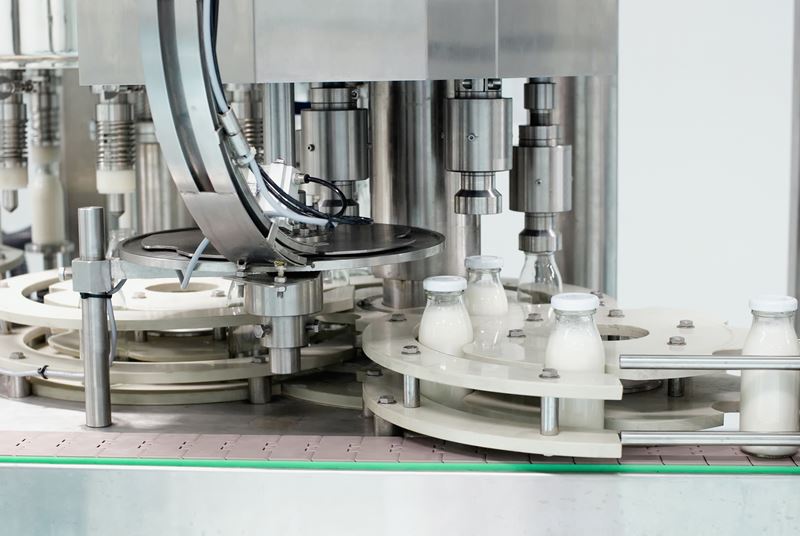Fluctuations in raw materials costs: What should manufacturers consider?
Fluctuations in raw materials costs: What should manufacturers consider?
Even when it’s “business as usual” for manufacturers, the cost of raw materials is always fluctuating. But in today’s world of constant turbulence, volatility is trending up.
In recent years, manufacturers have been strongly impacted by volatility in the supply and price of raw materials resulting from the COVID-19 pandemic and the war in Ukraine, notes Boston Consulting Group. While those impacts are easing, research shows that market disturbances caused by extreme events, including natural disasters, geopolitical disruptions, and other global crises are becoming more frequent and more pronounced.1
At the same time, high price inflation is an ongoing concern in the sector. Data from June 2022 shows that raw material prices paid by Canadian manufacturers climbed 37% year over year, with coal, crude oil and bitumen, and wheat seeing the highest volatility.2 While prices are on the downward trend – the May 2022 raw materials price index by Statistics Canada posted an 18.4% decline year over year3 – unpredictability can mean pricing is a balancing act.
“A big challenge for manufacturers is balancing fluctuating costs of raw materials, which vary by industry and by month, and trying to maintain margins and competitive pricing for their products,” says Ray Larkey, a Senior Property/Casualty Underwriting Specialist at Sovereign Insurance.
How can businesses regain control of their margins and stay resilient? PwC lays out a few tactics for manufacturers, including addressing labour costs, assessing potential impacts of price increases on end-customers, and taking a closer look at their supplier contracts. For example, manufacturers can assess which contacts should be fixed-priced, determine if contracts can be negotiated, and align their trading strategy with the current pricing environment.4
It might also mean being more aggressive in finding alternative suppliers that have better pricing, or suppliers that are closer to their operations to reduce delivery costs.5 This can also help reduce the impact of supply chain disruptions. In a 2022 survey by industry association Canadian Manufacturers & Exporters, 46% of respondents indicated that dual sourcing of critical components and raw materials is an action they’ve taken or are planning to take.6
While manufacturers have been trying to navigate price increases, there is one area they may have overlooked: valuations in their own businesses. Fluctuations in market price can impact the value of a manufacturer’s building, equipment and stock, and consequently, the insurance coverage required to replace that stock in the event of physical loss or damage on premises.
“Manufacturers have to consider up-to-date valuations to avoid an underinsurance issue on their insurance policies,” says Ray. “Historically, valuations that come in year after year don’t change a lot and a general inflation increase was applied across equipment and stock. But the world is different now… Valuations need to stay current to help ensure businesses are protected.”
While the onus is on manufacturers to provide up-to-date valuations, Ray advocates for a partnership approach. “With inflation, supply chain issues and other global events, insurance companies, brokers and clients should all work together and be more proactive given the new awareness of cost changes,” he says.
Another consideration for manufacturers on the insurance front is considering a longer indemnity period – i.e., the length of time benefits are payable under a policy – such as a 24 month period of indemnity on their profits coverage. Supply chain issues, such as delays caused by extreme weather events or raw materials shortages, can result in longer downtime for manufacturers, so they may want to look at a longer indemnity period, says Ray. “As with mitigating other risks, the key for manufacturers is to be proactive and stay up to date,” he says.
Sovereign offers comprehensive wordings designed for risks specific to the manufacturing sector, including fluctuation in raw material values, to help mitigate the impact of pricing volatility to their business.
Contact Sovereign Insurance to learn more.
Sources
1 Boston Consulting Group, “Gauging the Risks of Raw-Market Volatility,” Oct. 14, 2022
2 Visual Capitalist, “Visualizing Raw Material Inflation in Canada,” June 27, 2022
3 Statistics Canada, “Industrial product and raw materials price indexes,” May 2023
4,5 PwC, “Inflation, supply chain snarls and the incredible shrinking margin: What do manufacturers do now?” Feb. 16, 2022
6 Canadian Manufacturers & Exporters, “CME Survey on Supply Chains,” March 2022


